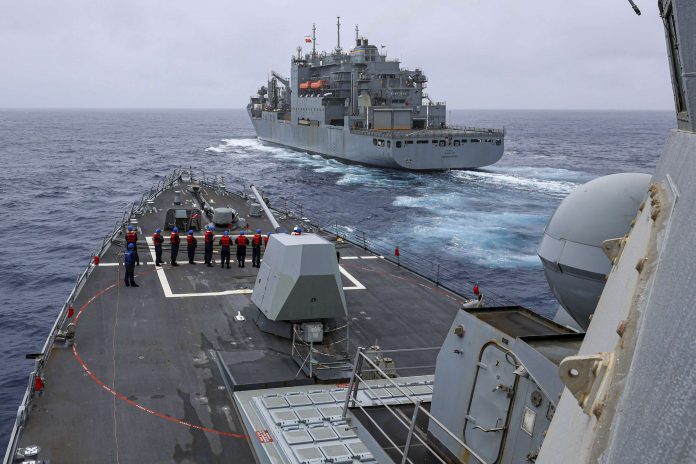
By KEN MORITSUGU
Associated Press
BEIJING (AP) — China accused the U.S. of abusing international law with its military maneuvers in the western Pacific, one day after an American naval destroyer sailed through the politically sensitive Taiwan Strait.
While China welcomes military-to-military communication with the United States, Defense Ministry spokesperson Wu Qian said Thursday that U.S. warplane and warship activity “on China’s doorstep” is the root cause of the problems between the two military powers.
“The United States side should stop abusing international law, cease all dangerous and provocative behavior, and strictly restrain the activities of front-line troops, which is the fundamental way to avoid accidents at sea and in the air,” he said at a monthly briefing.
The USS John Finn sailed Wednesday though the 160-kilometer (100-mile)-wide waterway that separates China from Taiwan, a self-governing island that China claims as its own territory.
China agreed to resume military contacts with the U.S. at a meeting last November between Presidents Joe Biden and Xi Jinping in California. In part, the argument for doing so was to be able to manage an unintentional collision or other incident that could happen as both sides hold drills and patrol the waters in regional hotspots including the Taiwan Strait and the South China Sea.
The U.S. defends its actions as in line with international laws that guarantee freedom of navigation.
“No member of the international community should be intimidated or coerced into giving up their rights and freedoms,” the U.S. Navy’s 7th Fleet said in a news release on the John Finn’s transit of the Strait. “The United States military flies, sails and operates anywhere international law allows.”
China’s rise has given it the ability to project military power into the western Pacific, which brings it into conflict with the United States, long the dominant military power in the region.
The American military activity is aimed in part at deterring China from launching any attack on Taiwan or using its strength to enforce its territorial claims in disputes with smaller neighbors such as the Philippines.
Chinese and Philippine ships clashed last year as disputes over shoals and other outcroppings in the South China Sea flared. China has blamed U.S. support, such as recent joint patrols with the Philippines, for emboldening the latter.
“On the issue of easing tensions in the South China Sea, it is very necessary for the big power concerned, namely the United States, to stop interfering and stop provoking,” Wu said.
Diplomats from China and the Philippines agreed at a recent meeting in Shanghai to work toward lowering tensions in the South China Sea, but doing so won’t be easy.
“It must be frankly stated that it is impossible to resolve the current South China Sea issue overnight,” Wu said.
China is willing to resolve the issue through dialogue and consultation, he said, but warned that “if the Philippine side insists on taking its own course, we will surely take firm countermeasures.”



















